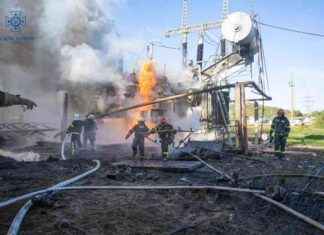Title: Latvia’s Response to Suspected Sabotage: Warships Deployed in Baltic Sea
Latvia sprang into action on Sunday, dispatching a warship in the Baltic Sea following damage to a fiber optic cable connecting Sweden, possibly caused by “external factors.” The Latvian navy swiftly identified a “suspect vessel,” the Michalis San, in close proximity to the incident along with two other ships. Navy commander Maris Polencs emphasized the continuous patrol of the Baltic Sea, enabling a rapid response upon learning of the damage.
As tensions escalate in the region, neighboring nations like Finland and Sweden have heightened their defenses in anticipation of potential threats. Sweden recently deployed 550 troops from a mechanized infantry battalion to Riga, joining a Canadian-led multinational brigade on NATO’s eastern flank. Latvian Prime Minister Evika Silina confirmed collaboration with Swedish authorities to assess the damage and determine its cause.
In a concerning development, the Eagle S, a tanker linked to Russia, was suspected of damaging an underwater electricity cable on Christmas Day. Michelle Wiese Bockmann, an analyst for Lloyd’s List, revealed that the vessel was equipped with specialized monitoring devices for naval activity and subsequently detained by Finnish authorities. NATO’s recent announcement of a monitoring mission in the Baltic Sea aims to deter any further attempts to target crucial undersea infrastructure.
The damaged cable, owned by Latvia’s state radio and television center (LVRTC), resulted in disruptions to data transmission services. While alternative solutions are in place to minimize user impact, delays in data transmission speeds are anticipated. LVRTC has initiated criminal proceedings based on their initial findings, attributing the significant damage to external factors.
Debate surrounds the cause of these cable cuts, with suspicions initially pointing towards Russia due to previous incidents involving vessels damaging undersea cables and pipelines in Europe. However, US intelligence officials suggest that inexperienced crews operating aging vessels may be responsible, with no concrete evidence implicating Russian involvement. Despite conflicting reports, the damaged undersea systems have heightened Europe’s sense of vulnerability, with incidents like the anchor-dragging event in November labeled as “sabotage” by German Defense Minister Boris Pistorius.
As tensions persist and suspicions linger, the Baltic Sea remains a focal point for security concerns, underscoring the need for continued vigilance and cooperation among nations in the region. The fallout from these incidents serves as a stark reminder of the delicate balance of power and the interconnectedness of global security.

















